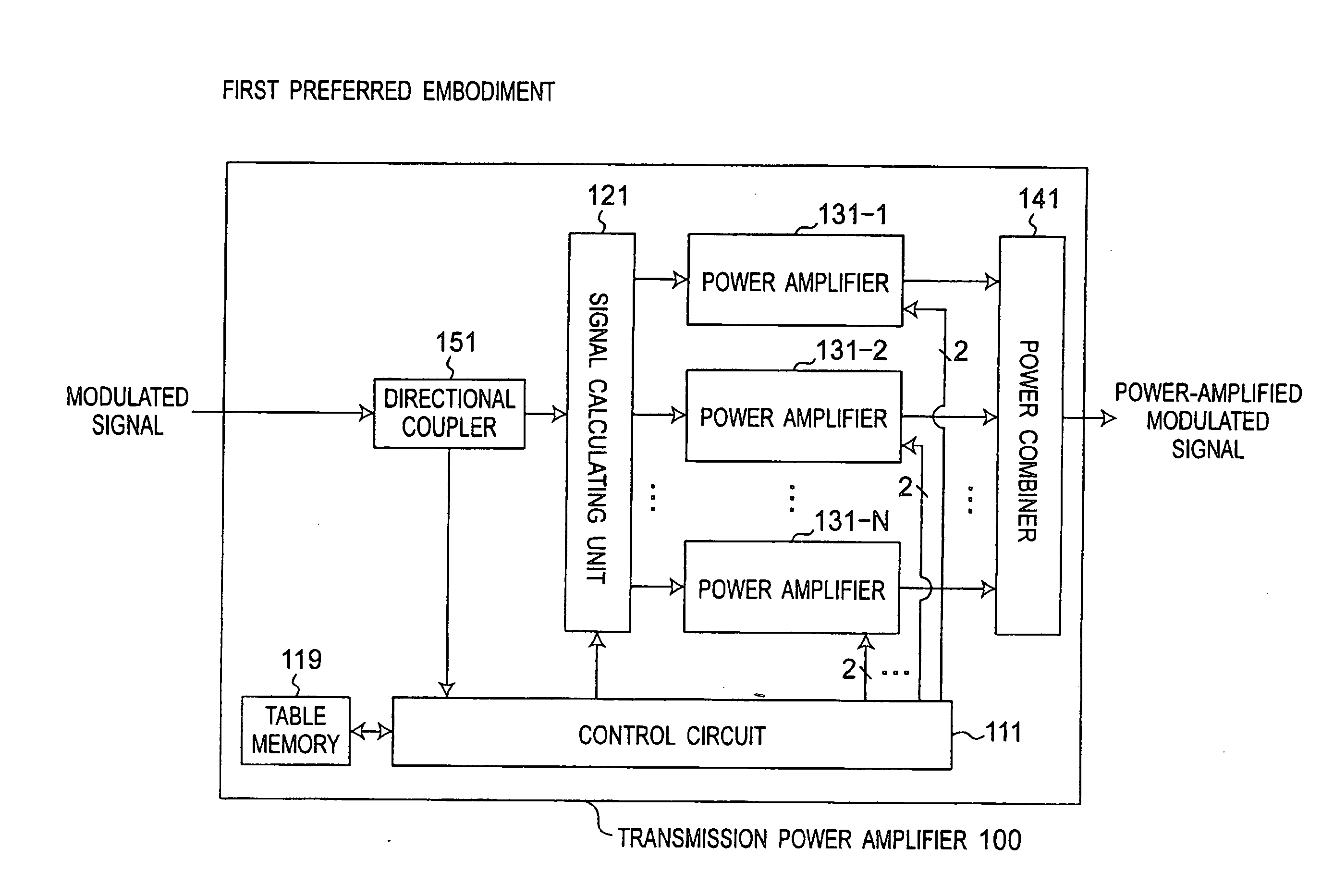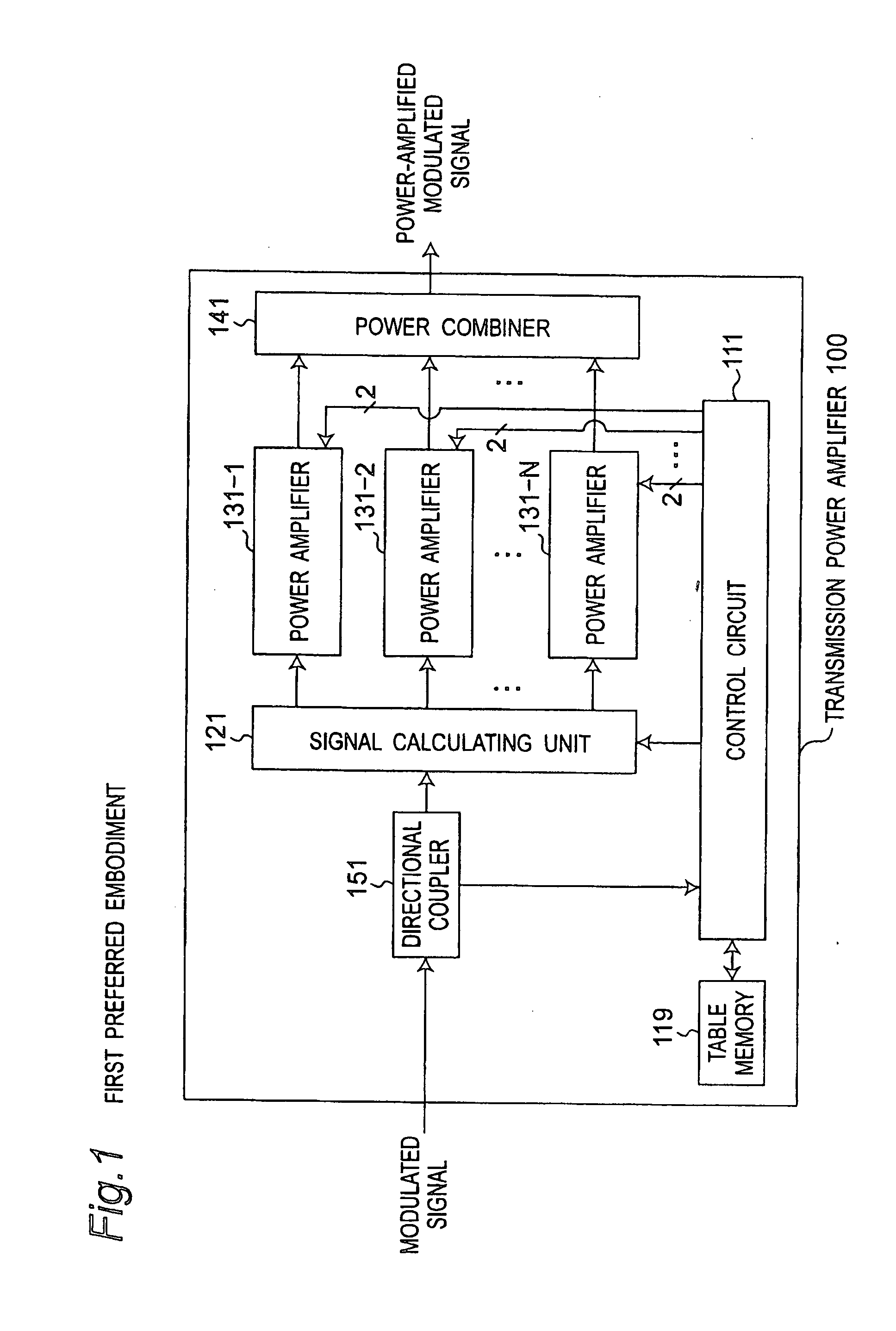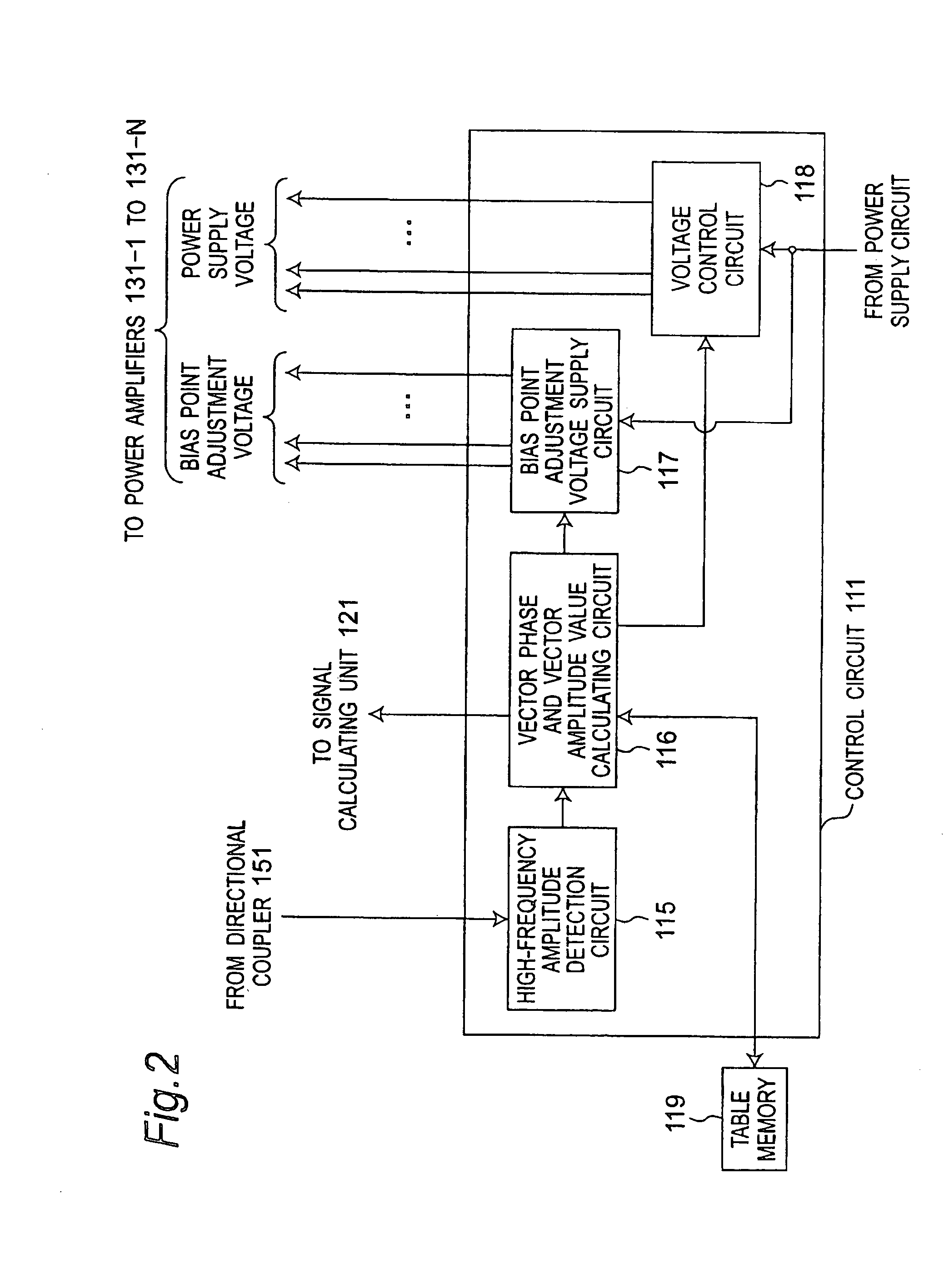Transmission power amplifier apparatus for combining power-amplified constant amplitude signals each having controlled constant amplitude value and phase
a technology of power amplifier and power amplifier, which is applied in the direction of rf amplifier, amplifier combination, transmission, etc., to achieve the effect of higher efficiency
- Summary
- Abstract
- Description
- Claims
- Application Information
AI Technical Summary
Benefits of technology
Problems solved by technology
Method used
Image
Examples
first preferred embodiment
[0069]FIG. 1 is a block diagram showing a configuration of a transmission power amplifier apparatus 100 according to a first preferred embodiment of the present invention. FIG. 2 is a block diagram showing a configuration of a control circuit 111 shown in FIG. 1. FIG. 3 is a block diagram showing a configuration of a plurality of or N power amplifiers 131-n (where n=1, 2, . . . , N) shown in FIG. 1. Referring to FIG. 1, the transmission power amplifier apparatus 100 is characterized by including a directional coupler 151, a signal calculating unit 121, N power amplifiers 131-n, a power combiner 141, a control circuit 111, and a table memory 119. Referring to FIG. 2, the control circuit 111 is configured to include a high-frequency amplitude detection circuit 115, a vector phase and vector amplitude value calculating circuit 116, a bias point adjustment voltage supply circuit 117, and a voltage control circuit 118. Referring to FIG. 3, each of the N power amplifiers 131-n is configur...
second preferred embodiment
[0127]FIG. 17 is a block diagram showing a configuration of a transmission power amplifier apparatus 100c according to a second preferred embodiment of the present invention. FIG. 18 is a block diagram showing a configuration of a control circuit 111c shown in FIG. 17. The transmission power amplifier apparatus 100c according to the second preferred embodiment is characterized, as compared with the transmission power amplifier apparatus 100 according to the first preferred embodiment, by including a control circuit 111c in place of the control circuit 111 and a digital modulator 161 that receives I and Q signals orthogonal to each other in place of the directional coupler 151. The digital modulator 161 low-pass-filters the received I and Q signals, outputs the low-pass-filtered I and Q signals to the control circuit 111c, converts the low-pass-filtered I and Q signals into a digitally modulated signal in which each of a phase component and an amplitude component contains transmissio...
third preferred embodiment
[0131]FIG. 19 is a block diagram showing a configuration of a transmission power amplifier apparatus 100d according to a third preferred embodiment of the present invention. FIG. 20 is a block diagram showing a configuration of a control circuit 111d shown in FIG. 19. The transmission power amplifier apparatus 100d according to the third preferred embodiment is characterized, as compared with the transmission power amplifier apparatus 100c according to the second preferred embodiment, by including a control circuit 111d in place of the control circuit 111c and further including a baseband circuit 171. The baseband circuit 171 receives transmission data, generates I and Q signals orthogonal to each other based on the received transmission data, outputs the I and Q signals to a digital modulator 161, and outputs digital data used to generate the I and Q signals to the control circuit 111d. The differences of the third preferred embodiment from the second preferred embodiment will be d...
PUM
 Login to View More
Login to View More Abstract
Description
Claims
Application Information
 Login to View More
Login to View More - R&D
- Intellectual Property
- Life Sciences
- Materials
- Tech Scout
- Unparalleled Data Quality
- Higher Quality Content
- 60% Fewer Hallucinations
Browse by: Latest US Patents, China's latest patents, Technical Efficacy Thesaurus, Application Domain, Technology Topic, Popular Technical Reports.
© 2025 PatSnap. All rights reserved.Legal|Privacy policy|Modern Slavery Act Transparency Statement|Sitemap|About US| Contact US: help@patsnap.com



